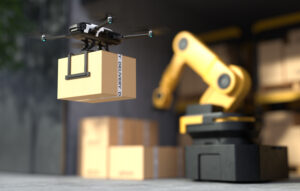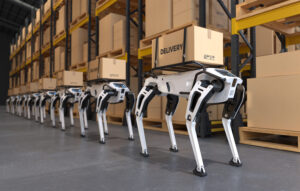The logistics sector is a constantly changing and evolving industry. With the rapid introduction of technological innovations into our lives, the use of automation and robotic applications in logistics processes has also become more widespread. These new technologies offer significant advantages to the sector by making logistics operations more efficient, fast, and secure.
Automation and Robotic Applications in Warehouse Management
Warehouse management is one of the areas where automation and robotic applications are most commonly used. Automated warehouse systems automate processes such as material placement, storage, and retrieval, resulting in time savings. Automated warehouse machines with access to high shelves can work faster and more effectively than human labor. Additionally, tasks such as tracking materials within the warehouse and inventory control can be performed by automation systems.
The Role of Automation and Robotic Applications in Distribution Processes
The importance of automation and robotic applications in distribution processes is increasing. Technologies such as intelligent transportation systems, automatic packaging machines, and drone deliveries help logistics companies optimize their delivery processes. Automatic packaging machines automatically package and label products, minimizing errors in the packaging process. Drone deliveries, on the other hand, enable fast delivery of products to customers without being hindered by traffic.

Advantages and Challenges of Automation and Robotic Applications
The use of automation and robotic applications in the logistics sector not only improves operational efficiency but also reduces costs. The reduction in labor costs through automation enables companies to be more competitive. Furthermore, faster and error-free processes increase customer satisfaction and allow businesses to provide faster and more reliable services to customers. However, the widespread adoption of automation and robotic applications in the logistics sector may pose some challenges.
Automation systems that can replace humans may result in some job losses. This situation requires a focus on the training needs of the workforce and acquiring new skills. Additionally, there may be financial barriers such as technological infrastructure and investment costs in order to successfully implement automation and robotic applications.
However, despite these challenges, the advantages provided by automation and robotic applications in the logistics sector are significant. Operational efficiency increases, errors decrease, costs decrease, and the level of security rises. Logistics companies can gain a competitive advantage and provide better service to customers by using automation and robotic applications.

It is expected that the logistics sector will further advance with automation and robotic applications in the future. With the development of advanced technologies, the use of smarter and autonomous systems will increase, making logistics processes more efficient. However, it should be noted that the human factor will still remain important. Success in the logistics sector will be achieved by utilizing the capabilities and creativity of humans to work together with technology.
Automation and robotic applications are ushering in a new era in the logistics sector. With the use of advanced technologies, business processes become more efficient, fast, and secure. Logistics companies can gain a competitive edge and stand out in the industry by keeping up with these innovations. The future of the logistics sector will continue to evolve and transform with the impact of automation and robotic applications. Therefore, it is crucial for those working in the logistics sector to adapt to these new technologies and continuously update their skills.
 It is expected that the logistics sector will further advance with automation and robotic applications in the future. With the development of advanced technologies, the use of smarter and autonomous systems will increase, making logistics processes more efficient. However, it should be noted that the human factor will still remain important. Success in the logistics sector will be achieved by utilizing the capabilities and creativity of humans to work together with technology.
Automation and robotic applications are ushering in a new era in the logistics sector. With the use of advanced technologies, business processes become more efficient, fast, and secure. Logistics companies can gain a competitive edge and stand out in the industry by keeping up with these innovations. The future of the logistics sector will continue to evolve and transform with the impact of automation and robotic applications. Therefore, it is crucial for those working in the logistics sector to adapt to these new technologies and continuously update their skills.
It is expected that the logistics sector will further advance with automation and robotic applications in the future. With the development of advanced technologies, the use of smarter and autonomous systems will increase, making logistics processes more efficient. However, it should be noted that the human factor will still remain important. Success in the logistics sector will be achieved by utilizing the capabilities and creativity of humans to work together with technology.
Automation and robotic applications are ushering in a new era in the logistics sector. With the use of advanced technologies, business processes become more efficient, fast, and secure. Logistics companies can gain a competitive edge and stand out in the industry by keeping up with these innovations. The future of the logistics sector will continue to evolve and transform with the impact of automation and robotic applications. Therefore, it is crucial for those working in the logistics sector to adapt to these new technologies and continuously update their skills. 




